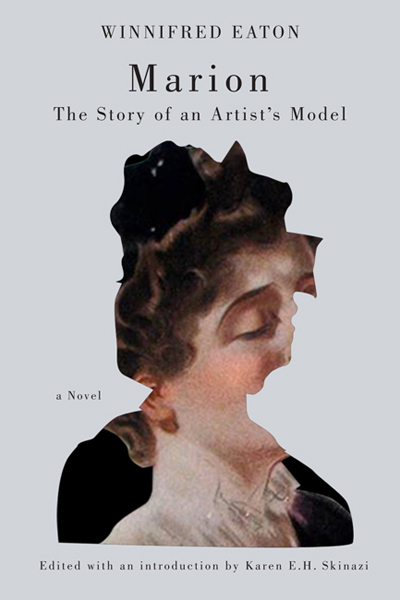Marion: The Story of an Artist’s ModelPosted in Asian Diaspora, Books, Canada, Media Archive, Novels, Passing, Women on 2012-04-04 02:10Z by Steven |
Marion: The Story of an Artist’s Model
McGill-Queen’s University Press
2012-03-19
410 pages
21 b&w photos
6 x 9
Paper (077353962X) 9780773539624
Winnifred Eaton (1875-1954)
Introduction by:
Karen E. H. Skinazi, Lecturer
Princeton Writing Program
Princeton University
The daughter of an English merchant father and Chinese mother, Winnifred Eaton (1875-1954) was a wildly popular fiction writer in her time. Born in Montreal, Eaton lived in Jamaica and several places in the United States before settling in Alberta. Her books, many of them published under the Japanese pseudonym Onoto Watanna, encompass the experiences of marginalized women in Canada, Jamaica, the United States, and a romantic, imagined Japan. Marion: The Story of an Artist’s Model is Eaton’s only book that explicitly deals with being “foreign” in Canada.
The novel follows the life of “half-foreign” Marion Ascough—a character based on Eaton’s own sister—while never identifying her “foreignness.” Escaping the unrelenting racial discrimination her family endures in Quebec, Marion follows her dream of being an artist by moving to New York, where she becomes “Canadian” instead of ethnic – a more palatable foreignness. Having successfully stripped herself of her ethnicity, Marion continues to experience discrimination and objectification as a woman, failing as an artist and becoming an artist’s model. Karen Skinazi’s introduction to Eaton’s fascinating narrative draws attention to the fact that although the novel uses many of the conventions of the “race secret” story, this time the secret is never revealed.
This new edition of Marion: The Story of An Artist’s Model brings back into print a compelling and sophisticated treasure of Asian Canadian/American fiction that offers a rare perspective on ethnicity, gender, and identity.
